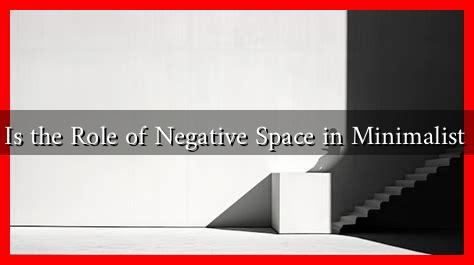-
Table of Contents
- What Is the Role of Negative Space in Minimalist Style?
- Understanding Negative Space
- The Importance of Negative Space in Minimalist Design
- 1. Enhancing Visual Hierarchy
- 2. Creating Emotional Impact
- 3. Encouraging Engagement
- Case Studies: Negative Space in Action
- Statistics on Negative Space and User Experience
- Conclusion
What Is the Role of Negative Space in Minimalist Style?
Minimalism is a design philosophy that emphasizes simplicity and the elimination of excess. One of the most critical elements of minimalist design is negative space, which refers to the empty areas surrounding and between the main subjects of a composition. This article explores the role of negative space in minimalist style, its significance, and how it enhances visual communication.
Understanding Negative Space
Negative space, also known as white space, is not merely the absence of content; it is an essential component of design that can influence perception and interpretation. In minimalist design, negative space serves several purposes:
- Focus: It directs the viewer’s attention to the main subject.
- Balance: It creates a sense of harmony and proportion within the design.
- Clarity: It enhances readability and comprehension by reducing clutter.
- Emphasis: It can highlight specific elements, making them stand out.
The Importance of Negative Space in Minimalist Design
Negative space plays a pivotal role in minimalist design for several reasons:
1. Enhancing Visual Hierarchy
In minimalist design, negative space helps establish a clear visual hierarchy. By strategically placing elements within a composition, designers can guide the viewer’s eye to the most important information. For instance, in a website layout, ample negative space around a call-to-action button can make it more prominent and inviting.
2. Creating Emotional Impact
Negative space can evoke emotions and set the tone of a design. For example, a stark, empty background can create a sense of calm and tranquility, while a crowded composition may feel chaotic. Brands like Apple utilize negative space effectively in their advertising, conveying sophistication and simplicity through clean lines and ample white space.
3. Encouraging Engagement
When viewers encounter designs with ample negative space, they are more likely to engage with the content. A clutter-free environment allows for easier navigation and comprehension, leading to a more enjoyable user experience. Research indicates that users are more likely to stay on a website that employs effective use of negative space, as it reduces cognitive load and enhances usability.
Case Studies: Negative Space in Action
Several renowned brands and designers have successfully harnessed the power of negative space in their minimalist designs:
- FedEx: The FedEx logo features a clever use of negative space, with an arrow formed between the letters “E” and “x.” This subtle design element conveys speed and precision, reinforcing the brand’s identity.
- Airbnb: The Airbnb logo, known as the “Bélo,” utilizes negative space to create a heart shape, symbolizing belonging. The simplicity of the design, combined with effective use of negative space, makes it memorable and impactful.
- Google: Google’s homepage is a prime example of minimalist design. The search bar is prominently placed against a vast expanse of white space, allowing users to focus solely on their search queries.
Statistics on Negative Space and User Experience
Research supports the effectiveness of negative space in design:
- A study by the Nielsen Norman Group found that users are 20% more likely to engage with content that is well-spaced and easy to read.
- According to Adobe, 38% of users will stop engaging with a website if the content or layout is unattractive, highlighting the importance of effective design.
Conclusion
Negative space is a fundamental aspect of minimalist design that enhances visual communication, emotional impact, and user engagement. By understanding and utilizing negative space effectively, designers can create compositions that are not only aesthetically pleasing but also functional and impactful. As seen in the case studies of successful brands, the strategic use of negative space can elevate a design from ordinary to extraordinary. In a world increasingly filled with visual noise, embracing the power of negative space may be the key to achieving clarity and connection in design.
For further reading on the importance of negative space in design, you can explore resources from Smashing Magazine.

